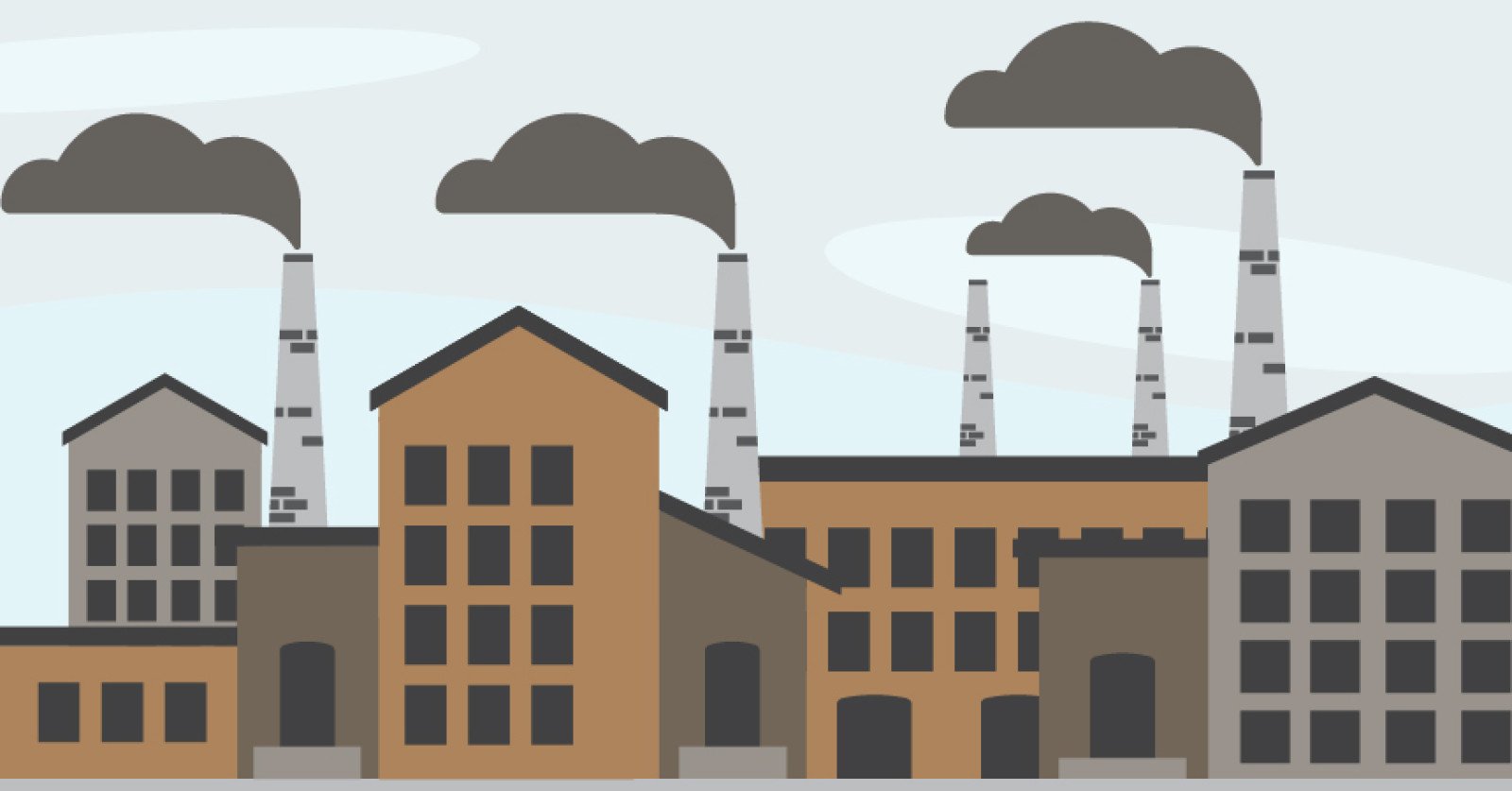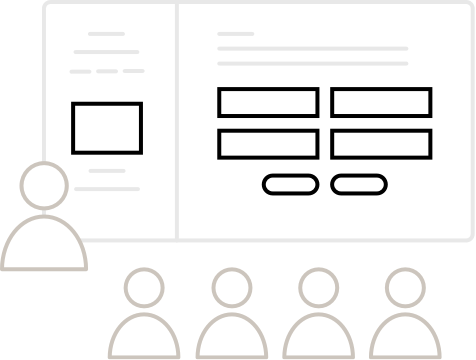Energy use during the Industrial Revolution
Using trivia, students explore how energy use changed in the Industrial Revolution and the effects this had on society, environment, and economy.

Overview
With the Industrial Revolution came the widespread use of fossil fuels. Students will roleplay as workers on an assembly line production to experience an innovation of the Industrial Revolution.
Single screen mode
A single screen and laptop is used for watching the video and answering questions together as a class.
Before you begin, make sure:
- You’re connected to the internet
- You’re projecting your screen for the class to see

Need help with using quiz activities in the classroom?
Check out
our
Getting started guide.
Multi-player mode
Multi-player mode allows you to run the activity while your students participate (either individually or in small groups) on their own phones, tablets, or computers.
Before you begin, make sure:
- You and your students are all connected to the internet
- You’re projecting your screen for the class to see
Need help with using quiz activities in the classroom?
Check out
our
Getting started guide.
Instructions
What you'll need
- Laptop and projector
Role play
- “Assembly line” instructions, print one copy per group of 5-6 students
- For each group of 5-6 students:
- 2 glue sticks
- 1 ruler
- 1 pair of scissors
- 1 pencil
- Colouring crayons or markers
- 15 sheets of recycled paper (can have printing on one or both sides)
- Timer
- “How to make a 3D paper cube” video (Source: Pretty things)
- Complete the “Life Pre-Industrial Revolution” activity. Life was very labour intensive then, without the use of today’s conveniences like washing machines and cars. Most people lived in rural areas working on the land and rarely travelling. A lot of tasks were done by hand or using animals including growing food, making fabric, and washing clothes.
- Ask students to share what they know about the Industrial Revolution. Between 1750-1850, new inventions, such as the steam engine, dramatically changed the way that people lived and worked. Steam engines relied on the use of fossil fuels, particularly coal. This began an era of the widespread use of fossil fuels.
- Play video: “Coal, iron, and steam: The Industrial Revolution takes off”.
- Launch quiz. You can let students raise their hands or say the answers out loud. Have students share why they chose that answer. Let them also know that some questions have more than one correct answer.
- After playing the quiz game, discuss what they learned.
- What are some of the positive outcomes of the Industrial Revolution that we still benefit from today?
- Who benefitted the most from industrialization? Who suffered more? Factory owners often made large amounts of money, while workers made low wages, and had to deal with health risks.
- What populations or groups were more vulnerable to harms from pollution, factory injuries, and rapid urbanization? Women, children, people with no education or training, and racialized workers were more vulnerable to harm.
- What long term environmental harms started during the Industrial Revolution that we're still dealing with today? We still burn coal to fuel factories, causing air pollution. Climate change is having effects on us now and will in the future. Abandoned oil wells, coal mines, and other industrial activities have left polluted land and water.
Assembly line activity
- A significant innovation of the late period of the Industrial Revolution was the development of assembly line manufacturing, where products or goods are produced by workers working along a motorized or automated line. Ask students if they can come up with an example of how an assembly line works.
- Now that students understand the effects of the Industrial Revolution on society, tell them they'll be making their own assembly line production, making paper cubes.
- Divide students into groups of 5-6 and give each group a copy of the “Assembly line” instructions, two glue sticks, one ruler and pencil, one pair of scissors, colouring crayons or markers, and 15 sheets of paper.
- Show the “How to make a 3D paper cube” video demonstrating how to make the paper cubes.
- Goal is for each group to make as many cubes as possible in 10 minutes.
- Before they start, have students working as a team, making one cube together so they all know how it's made. Next, have them divide up the tasks creating an assembly line. Remind them to make sure they have the correct tools, like if one student is worker #1, they'll need a ruler and pencil. If there are less than 6 members in the group delete the final task of decorating.
- Suggest students test out how long each worker takes, they can elect to change the tasks so they each take equal time, like if measuring and drawing takes too long, have one worker measure and the next one draw the lines. If you do this you might need to combine tasks for other workers, like the gluing be done by just one worker.
- Once all the groups are ready start the assembly lines, and set a timer for 10 minutes.
- When the timer sounds, have each group count their cubes. Some cubes might be sub-standard and therefore rejected.
- As a class reflect on the experience. What parts of the system worked well? What was least efficient? What did it feel like to work under pressure to complete your task?
- Ask students how they would feel if they had to do that for 12-14 hours a day, 6 days a week. Have them imagine that it was in a factory with dangerous machines, poor air quality, and minimal breaks.
- Overall, the Industrial Revolution and the burning of fossil fuels allowed a rapid increase in manufacturing of goods, making them cheaper and more accessible to many. But it came with consequences to health, to the environment with increased waste, air pollution and emissions of greenhouse gasses, along with rapid urbanization and changes to how people lived.
Modify or extend this activity
Watch this video: 300 Years of FOSSIL FUELS in 300 seconds (Source: Post Carbon Institute)
Curriculum Fit
Socials 8 (7th century to 1750)
Big ideas
Human and environmental factors shape changes in population and living standards.
Content
- Scientific and technological innovations
- Interactions and exchanges of resources, ideas, arts, culture between and among different civilizations
- Changes in population and living standards
Socials 9 (1750 to 1919)
Big idea
Emerging ideas and ideologies profoundly influence societies and events.
Content
Political, social, economic, and technological revolutions
English Arts 8 & 9
Big idea
Exploring stories and other texts helps us understand ourselves and make connections to others and to the world.
Career Education 8 & 9
Big idea
The value of work in our lives, communities, and society can be viewed from diverse perspectives.
Assessments
- Assess students’ understanding of the Industrial Revolution and its impacts on society, environment and economy.
- Assess students’ cooperation, participation and ability to work collectively in the assembly line.
Teaching Notes
Industrial Revolution
The Industrial Revolution is generally considered to have taken place between 1760-1850, starting in Britain and then moving to other countries. Inventions like the steam engine, cotton gin, spinning jenny, power loom and others changed the way things were made and increased the use of fossil fuels. The steam engine meant coal was mined at deeper levels, and the creation of railways and canal systems allowed the coal to be transported farther and more cheaply, driving increased coal use. Factories were built in cities, and increased agriculture efficiencies drove more people to the cities for work. Work in factories was often dangerous, leading to illness and injury, and thus loss of work. Hours were long and working conditions poor. Income inequality grew as factory owners became wealthy, and workers lived in slums. Factories burning coal created dense air pollution in cities, with many health consequences.
The invention of the cotton gin, which removed cotton seeds from the cotton and made cotton a financially viable crop, led to the massive increase of cotton production in America. Since cotton relied on enslaved people to be produced, this also led to a rapid increase in the slave trade.
With rapidly changing living conditions in Britain, more people chose to leave and travel to North America. In North America, railways were built in the 19th century, facilitating transportation of goods and leading to more manufacturing. In the late 19th and early 20th century, mass automation and the moving assembly line led to growth in rail, steel, consumer goods and automotive sectors.
The modern labour movement grew out of working conditions during the Industrial Revolution in the 19th century, organizing workers and using strikes to demand child labour laws, caps on work hours, minimum wage laws, lunch breaks, and health and safety regulations.
For more information see:






